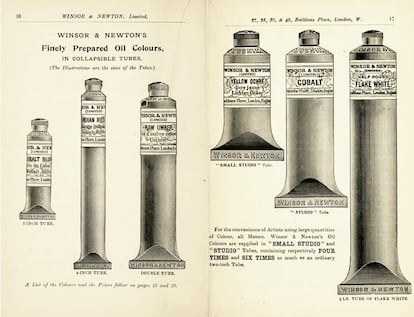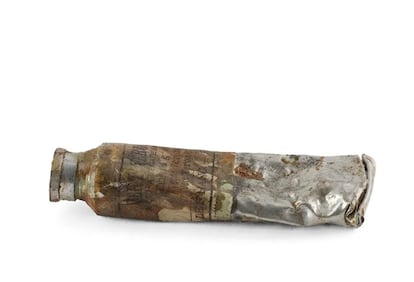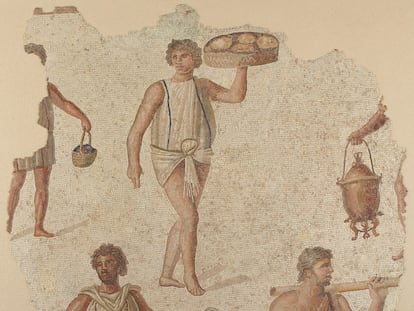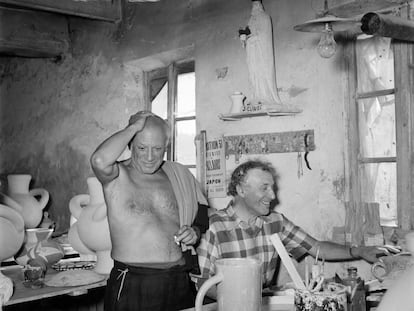The paint tube that revolutionized the world of impressionism
The tin tube with a screw cap forever changed the way artists worked, as it allowed them to get away from their studios to paint outdoors

If there’s a pictorial style influenced by a scientific method, that style is Impressionism. At first, the pictorial term “Impressionism” was born to redefine itself… that is, to contradict an article written by the critic Louis Leroy in 1874, in the satirical newspaper Le Charivari. It was titled: The Exhibition of the Impressionists. It was a mocking piece that ridiculed the exhibition that had taken place at the independent artists’ salon in Paris, where, among many other works, the painting by Claude Monet — Impression, Sunrise — had stood out.
Changing the meaning of the term coined by Leroy, “Impressionism” came to define a pictorial style, where the vibration of light on bodies was experimented with, by using discontinuous brushstrokes. This was a technique that, some time later, in the 20th century, would be called the “gestalt brushstroke,” alluding to Gestalt psychology, a current of modern psychology born to scientifically demonstrate that “the whole is more than the sum of its parts.”
When applied to Impressionist pictorial art, this notion demonstrated how colorful spots — dispersed in appearance — are perceived by our brain in a unitary way. The paintings by the impressionist artists, with their short and exhausted-looking strokes, would open the door to pointillism, a pictorial technique with dots of color that, seen from a certain distance, define bodies and landscapes.
However, Impressionism wouldn’t have existed without the precise moment that led John Goffe Rand, an American painter, to invent the tin paint tube with a screw cap. This revolutionized the world of painting and strengthened the Impressionist movement.
Goffe Rand patented his creation in 1841. Until that year, if a painter took his materials to paint outdoors, he had to carry his pigments in pig bladders. Therefore, the ability to preserve paint in tubes, which kept the colors alive until they were finished, was a stimulus for painters such as Monet, the artist who gave his name to a style without intending to. One fine day, he left his studio ready to capture the light that was reflected in the waters of the port of Le Havre, as dawn rose over the ships. The rest is a matter of luck… and the bad judgment of a painter (Leroy) involved in criticism.

But if there’s a scientific figure who contributed to the study of colors and their perception, that figure was physicist Hermann von Helmholtz, who published an essential work for the Impressionist painters: Handbook of Physiological Optics (1867). In the scientific book, he stated that color is a perception. As a result, it also became a reference book for artists in the second half of the 19th century.
Von Helmholtz’s optical discovery was that, in our retina, we only combine three colors: red, green and blue. He used this to demonstrate that the other colors originate in the brain. This meant a new way of applying pigments, especially to shadows that were no longer black. Because of these factors, pictorial Impressionism was closely linked to the scientific field. It was a moment in Europe in which the light of science ended up illuminating the world of painting.
Sign up for our weekly newsletter to get more English-language news coverage from EL PAÍS USA Edition
Tu suscripción se está usando en otro dispositivo
¿Quieres añadir otro usuario a tu suscripción?
Si continúas leyendo en este dispositivo, no se podrá leer en el otro.
FlechaTu suscripción se está usando en otro dispositivo y solo puedes acceder a EL PAÍS desde un dispositivo a la vez.
Si quieres compartir tu cuenta, cambia tu suscripción a la modalidad Premium, así podrás añadir otro usuario. Cada uno accederá con su propia cuenta de email, lo que os permitirá personalizar vuestra experiencia en EL PAÍS.
¿Tienes una suscripción de empresa? Accede aquí para contratar más cuentas.
En el caso de no saber quién está usando tu cuenta, te recomendamos cambiar tu contraseña aquí.
Si decides continuar compartiendo tu cuenta, este mensaje se mostrará en tu dispositivo y en el de la otra persona que está usando tu cuenta de forma indefinida, afectando a tu experiencia de lectura. Puedes consultar aquí los términos y condiciones de la suscripción digital.
More information
Archived In
Últimas noticias
There is as much life left to discover on planet Earth as that which is already known
Dozens presumed dead, around 100 injured in fire at Swiss Alps bar during New Year’s celebration
Is porn for women different from conventional porn? We spoke to those who make it
Cartagena de Indias is sinking: What can the city do to mitigate it?
Most viewed
- Sinaloa Cartel war is taking its toll on Los Chapitos
- Reinhard Genzel, Nobel laureate in physics: ‘One-minute videos will never give you the truth’
- Oona Chaplin: ‘I told James Cameron that I was living in a treehouse and starting a permaculture project with a friend’
- David King, chemist: ‘There are scientists studying how to cool the planet; nobody should stop these experiments from happening’
- Why the price of coffee has skyrocketed: from Brazilian plantations to specialty coffee houses











































